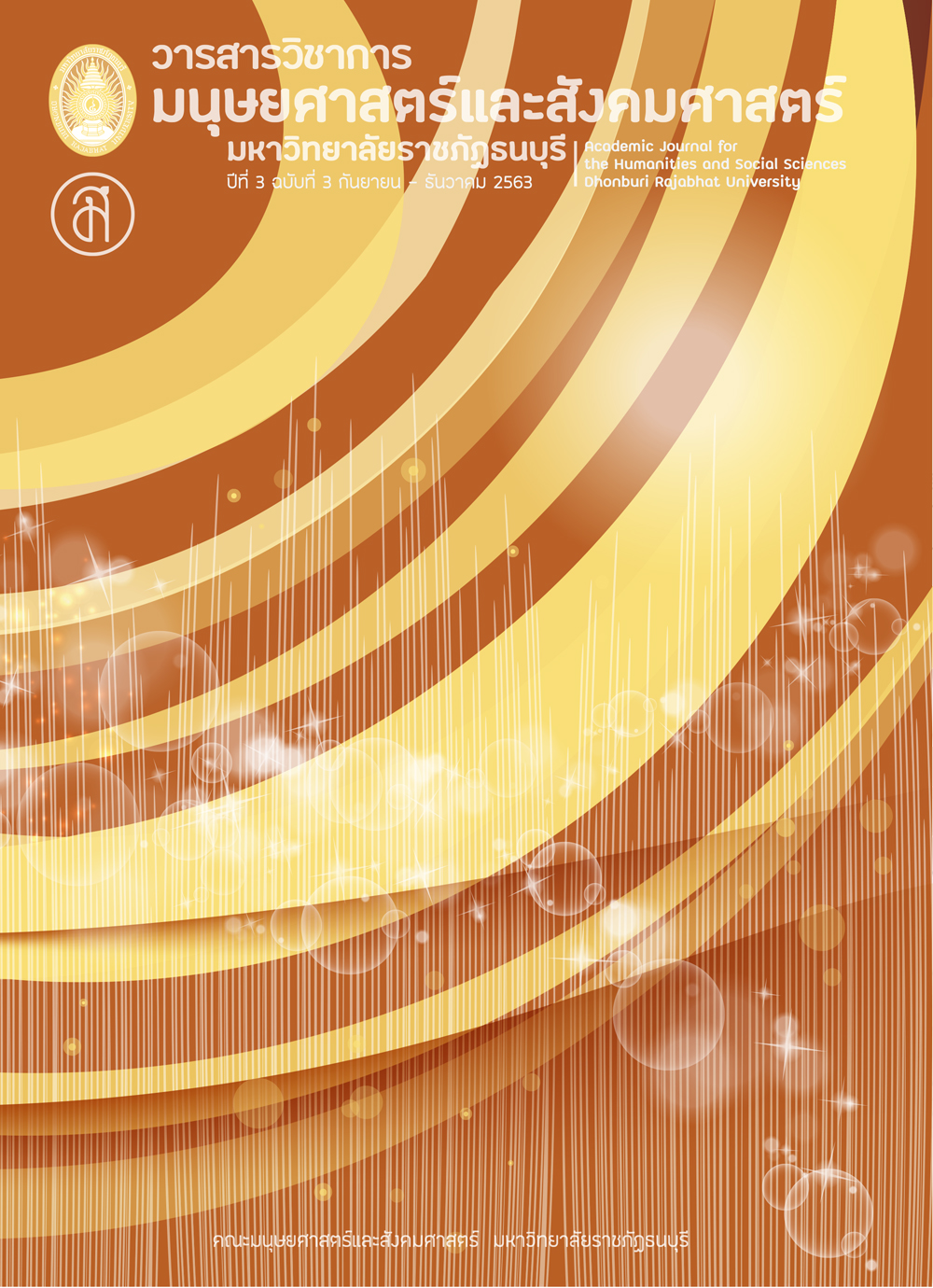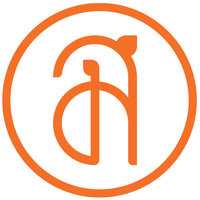การเสริมสร้างความรู้ด้านกรรมวาจก โดยใช้บทเรียนเสริมผ่าน Google Classroom
คำสำคัญ:
กรรมวาจก, ชุดสื่อการสอน, กูเกิ้ลคลาสรูมบทคัดย่อ
การวิจัยนี้มีวัตถุประสงค์เพื่อศึกษาประสิทธิผลของบทเรียนเสริมเรื่อง กรรมวาจก (passive voice) ผ่าน Google Classroom และเพื่อศึกษาทัศนคติของนิสิตต่อบทเรียนเสริม เรื่อง passive voice ผ่าน Google Classroom กลุ่มตัวอย่างเป็นนิสิตสาขาวิชาภาษาอังกฤษ ชั้นปีที่ 1 มหาวิทยาลัยพะเยา จำนวน 28 คน ซึ่งลงทะเบียนรายวิชาประโยคภาษาอังกฤษ (english sentences) ภาคเรียนที่ 2 ปีการศึกษา 2562 คัดเลือกโดยวิธีแบบเจาะจง เครื่องมือที่ใช้ในการวิจัย คือ แบบทดสอบความรู้ แบบสอบถาม แบบสัมภาษณ์แบบกึ่งโครงสร้าง และบทเรียนเสริมเรื่องกรรมวาจก ใช้สถิติเชิงพรรณาและ ค่า t–test และใช้การวิเคราะห์เชิงเนื้อหา ผลการวิจัยพบว่าบทเรียนเสริม เรื่องกรรมวาจก ผ่าน Google Classroom สามารถเสริมสร้างความรู้ด้าน กรรมวาจก ของกลุ่มตัวอย่างอย่างมีนัยสำคัญที่ระดับ .01 อีกทั้งบทเรียนเสริมยังมีประสิทธิภาพสูงกว่าเกณฑ์ที่ตั้งไว้ คือ E1/E2 = 80/80 จากผลการวิจัยได้ค่า E1/E2 = 81.28/82.60 และยัง พบว่า ผู้เรียนมีทัศนคติที่ดีต่อบทเรียนเสริมผ่าน Google Classroom
เอกสารอ้างอิง
Abdulsata, P. (2000). An Error Analysis of Srinakharinwirot University Second Year English Major Students’ Compositions. Unpublished master’s thesis, Srinakharinwirot University.
Aisoh & Mahdee (2018). Google Classroom Application in Learning Development and Responsibilities Behaviors of Mathayom 1 Students, Room 10, Pattani Benjamarachutit School. 6th Active Learning National Conference for Thailand 4.0. Walailak University. (pp. 421-430). Nakhon Si Thammarat: Walailak University.
Celce-Murcia, M. (1991). Language and communication: A time for equilibrium and Integration. In J. E. Alatis (Ed.), Georgetown University Round Table on Language and Linguistics,Washington, DC: Georgetown University Press.
Choomtong, D. (2009). A Case Study of Learning English Passive Voice: Difficulties and Learning Strategies. Retrieved from www.e-manage.mju.ac.th /openFile.aspx?id=MTA0MjIw
Hinkel. (2004). Tense, aspect and the passive voice in L1 and L2 academic texts. Language Teaching Research. 8(1), pp. 5-29.
Lekpoonkrid, C. (2016). Active and Passive Voices through Concept Attainment Model (CAM) : a Case of Mathayom 1 Students. Liberal Arts Journal, Ubonratchathani University, 8(2), pp. 91-118.
Li, C.N., & Thomson, S.A. (1976). Subject and Topic: A New Typology of Language. in Chares N. Li (ed.). Subject and Topic. New York: Academic Press.
Richards, J.C., Gallo, P.B., & Renandya, W.A. (2001). Exploring teachers’ beliefs and the processes of change. Retrieved from http://www.professorjackrichards.com/pdfs/exploring-teacher-change.pdf
Somphong, M. (2013). An Analysis of Errors in Passive Sentence Structures by Thai EFL University Students. Nakhon Si Thammarat: Rajamangala University of Technology Srivijaya.
ดาวน์โหลด
เผยแพร่แล้ว
รูปแบบการอ้างอิง
ฉบับ
ประเภทบทความ
สัญญาอนุญาต
ลิขสิทธิ์ (c) 2021 มหาวิทยาลัยราชภัฏธนบุรี

อนุญาตภายใต้เงื่อนไข Creative Commons Attribution-NonCommercial-NoDerivatives 4.0 International License.
บทความที่ได้รับการตีพิมพ์เป็นลิขสิทธิ์ของ คณะมนุษยศาสตร์และสังคมศาสตร์ มหาวิทยาลัยราชภัฏธนบุรี
- บทความในวารสารวิชาการมนุษย์และสังคมศาสตร์ มหาวิทยาลัยราชภัฏธนบุรี เป็นความคิดเห็นของผู้นิพนธ์ ไม่ใช่ความคิดเห็นของกองบรรณาธิการ และไม่ใช่ความรับผิดชอบของกองบรรณาธิการและ/หรือของคณะมนุษยศาสตร์และสังคมศาสตร์ มหาวิทยาลัยราชภัฏธนบุรี
- กองบรรณาธิการไม่สงวนสิทธิ์ในการคัดลอก แต่ให้อ้างอิงแสดงที่มา
- บทความที่ได้รับตีพิมพ์จะมีการตรวจความถูกต้องเหมาะสมจากกองบรรณาธิการและผู้ทรงคุณวุฒิในสาขาที่เกี่ยวข้อง (peer review) จำนวน 3 คน โดยผู้ทรงคุณวุฒิจะไม่ทราบผู้นิพนธ์ และผู้นิพนธ์ไม่ทราบชื่อผู้ทรงคุณวุฒิ (double-blind peer review)




